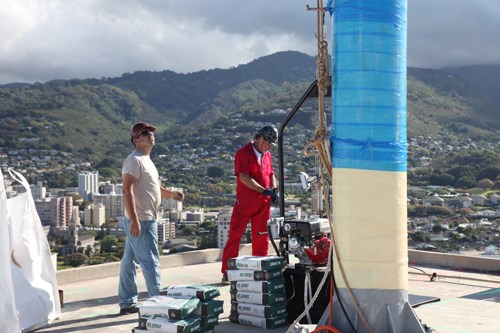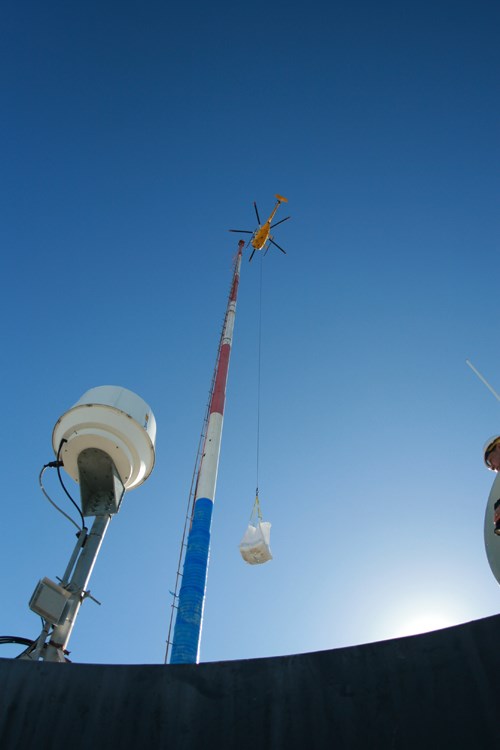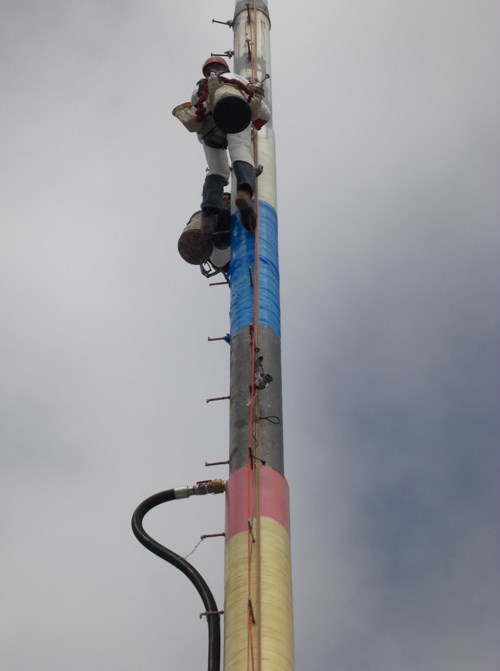Composites fit telecom tower repair like a glove
Telecome towers are critical to phone, television and radio communications, but building new ones is expensive. Composites-based repair systems aim to extend the life of towers already in operation.

Comptek and Aero Solutions developed a composites-based telecom tower
repair system that helps operators extend tower life.
More than 100,000 cell phone towers dot the American landscape. No one wants one in their back yard, yet millions depend on their electromagnetic signals that are essential to modern communication. The "not in my back yard" (NIMBY) attitude means that as these structures age, operators can’t easily erect new towers, and must make repairs to extend their service life — and add capacity for the proliferating equipment of more and more providers.
Developing safe repair methods took ingenuity. The galvanized steel towers support miles of flammable coaxial cables, and when workers weld steel jackets or additional structural support high onto the existing structure, welding sparks and slag have often ignited cables, resulting in expensive fires. Plus, scaling the towers for any reason is very hazardous, even deadly; many climbers have died in tower accidents.
Structural engineer Jim Lockwood, CEO of Comptek Structural Composites (Boulder, Colo., USA) knew there was a better way: “A telecommunications company saw an article I had written for the American Composites Manufacturers Assn. Market Development Alliance [now the Composites Growth Initiative], and contacted me. That was our opportunity to introduce composites for the tower repair market.” Twelve years later, Comptek and its spinoff design/build company Aero Solutions LLC, have the corner on this specialized and successful market.

Comptek and Aero Solutions have tackled some daunting telecom tower repair challenges that could not have been accomplished without composite materials. A good example is the repair of the 175-ft/54m tall KHON television broadcasting tower, atop a 42-story high-rise building in downtown Honolulu, Hawaii, USA. The tower was so badly corroded and deteriorated that Honolulu officials condemned it. Yet, without it, the television station would have had to find an alternate and less desirable location, since building codes prevented construction of a replacement.

Aero Solutions designed a carbon wrap for the tower, with unidirectional carbon fiber, aligned parallel to the tower axis, carefully bonded to the steel, followed by outer hoop wraps of unidirectional carbon fiber over 40 percent of the tower, to ensure structural integrity. A cement-based grout injection followed, to provide additional stiffness to the monopole. Materials and grout pumping equipment had to be delivered by helicopter. Once stabilized, the tower was wrapped with Comptek’s water-activated polyurethane prepreg as an outer weather-tight layer, supplemented by a confining peel ply during prepreg cure (shown in blue). Lockwood says “Composites delivered a miracle in that situation — there simply was no other alternative.”
Look for a longer, more detailed report on this repair technology in the April 2014 issue of Composites Technology magazine.
Related Content
-
Swedish parking garage to incorporate decommissioned wind blades
Architect Jonas Lloyd is working with Vattenfall to design the multistory building with a wind blade façade, targeting eco-friendly buildings and creative ways to remove blades from landfills.
-
21st century concrete: composite metamaterial with super compressability, energy harvesting
Material comprising 3D-printed, auxetic, reinforced polymer lattices in conductive cement matrix can compress up to 15% and generate electricity for lightweight, mechanically tunable structures with energy harvesting and sensing.
-
New standard specification supports non-metallic FRP rebar
ASTM International standard D8505 enables further integration of FRP rebar into infrastructure applications.
















